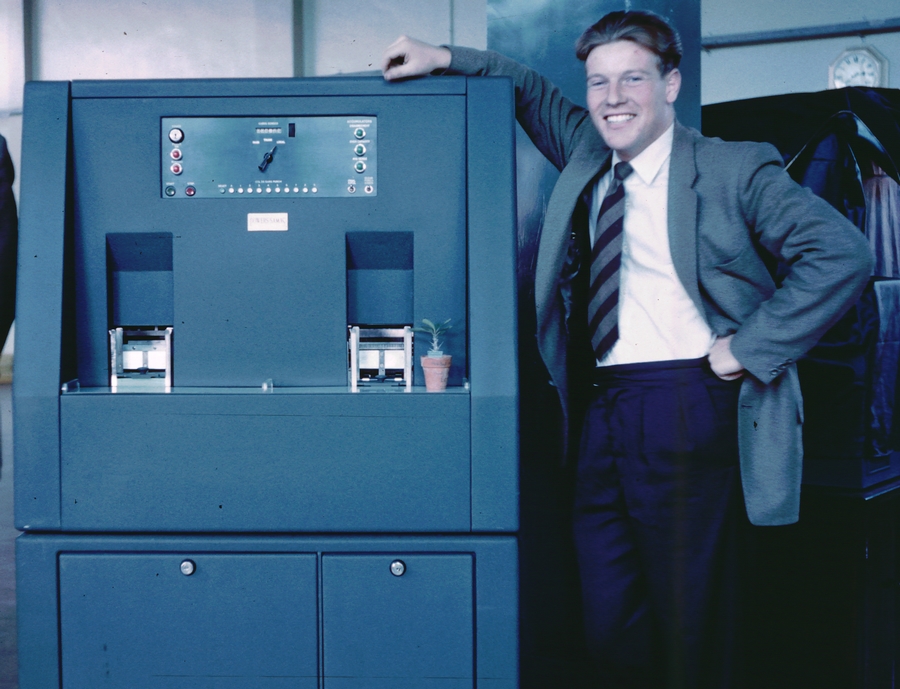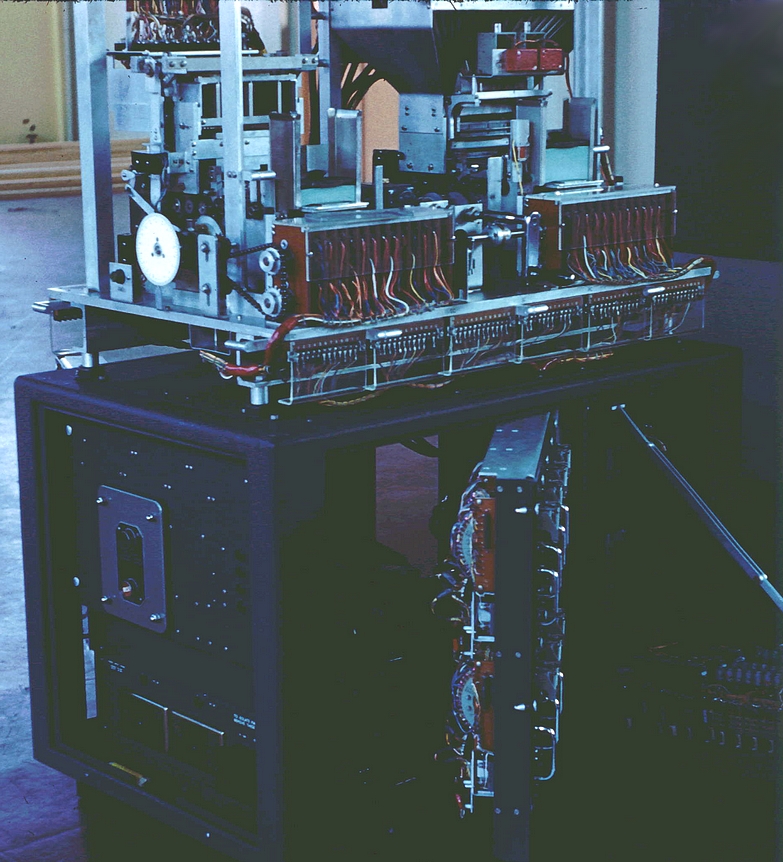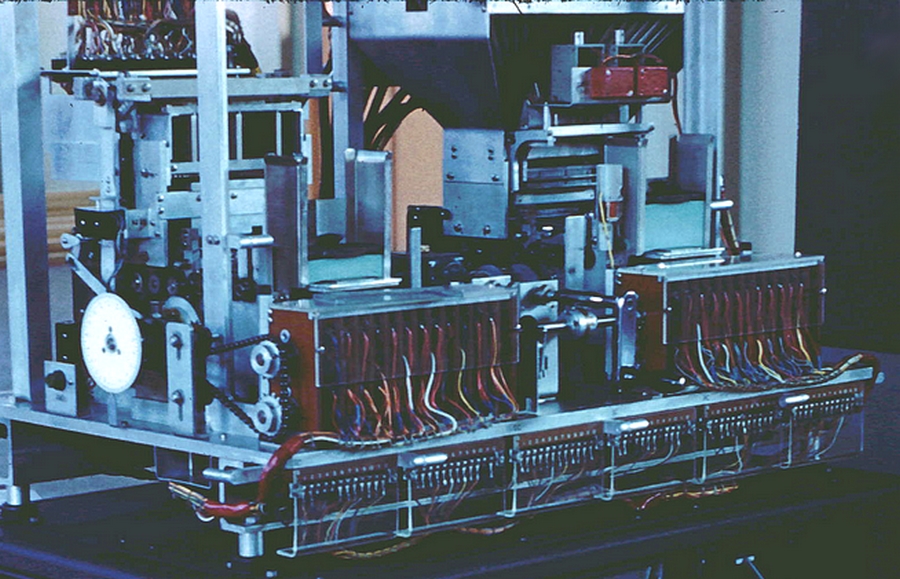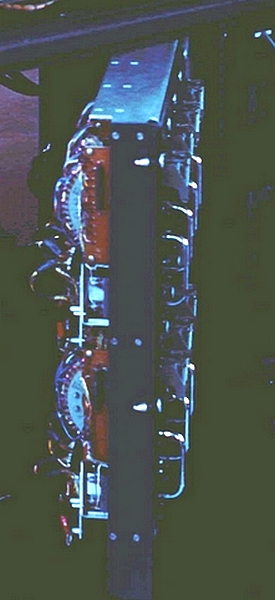
Clearly shown are the two card "magazines", the one on the left for inputting the source cards and the right hand one for the blank green "summary" cards. This machine accumulated "units" from each successive source card until a change of subscriber's number was detected by means of a complex relay system. Then the left hand card track stopped feeding and the right hand track started and punched the accumulated total into one "summary" card, whereupon that track stopped and the lefthand track restarted. Cards were fed at 200 per minute and the sensing was achieved by using the very novel but reliable method of printed circuit switches.
With the drab grey covers removed.

Below, the four banks of Lucas cam switches are shown. The contacts were exactly the same as the "points" used in car distributors. The hand winding handle happens to be inserted: either track could be brought into operation by manually tripping the appropriate clutch.

 Shown to the left are the plugged-in individually removable gate mounted uniselector counters on which the arithmetic was performed. Each unit counted to five ratcheted on by by pulses directed from the camswitches dependent on the sensed values. A count of five set an onboard bistable relay pair. A second count of five resulted in a carry to the adjacent higher order uniselector. On the other side of the machine a second identical set of uniselectors was provided and these carried out the same count of the sensed units. At the time of punching the summary cards this "check" set had to show the same count as the front set, this being compared by electrical means, and a discrepency resulted in the machine halting with an error light illuminated, and engineer investigation was needed.
Shown to the left are the plugged-in individually removable gate mounted uniselector counters on which the arithmetic was performed. Each unit counted to five ratcheted on by by pulses directed from the camswitches dependent on the sensed values. A count of five set an onboard bistable relay pair. A second count of five resulted in a carry to the adjacent higher order uniselector. On the other side of the machine a second identical set of uniselectors was provided and these carried out the same count of the sensed units. At the time of punching the summary cards this "check" set had to show the same count as the front set, this being compared by electrical means, and a discrepency resulted in the machine halting with an error light illuminated, and engineer investigation was needed.
One end of the machine contained an additional uniselector bank for carrying out sterling calculations. These had to count in threes and fours. But this feature was never utilised and thankfully so, as it had a reputation for unreliability.
It should be mentioned that this machine was designed jointly with the Post Office. They had successfully used uniselectors in their "Calculator" provided for the RAF radar stations in 1940.
Rev171108
All text © 2007 D.C.Adams